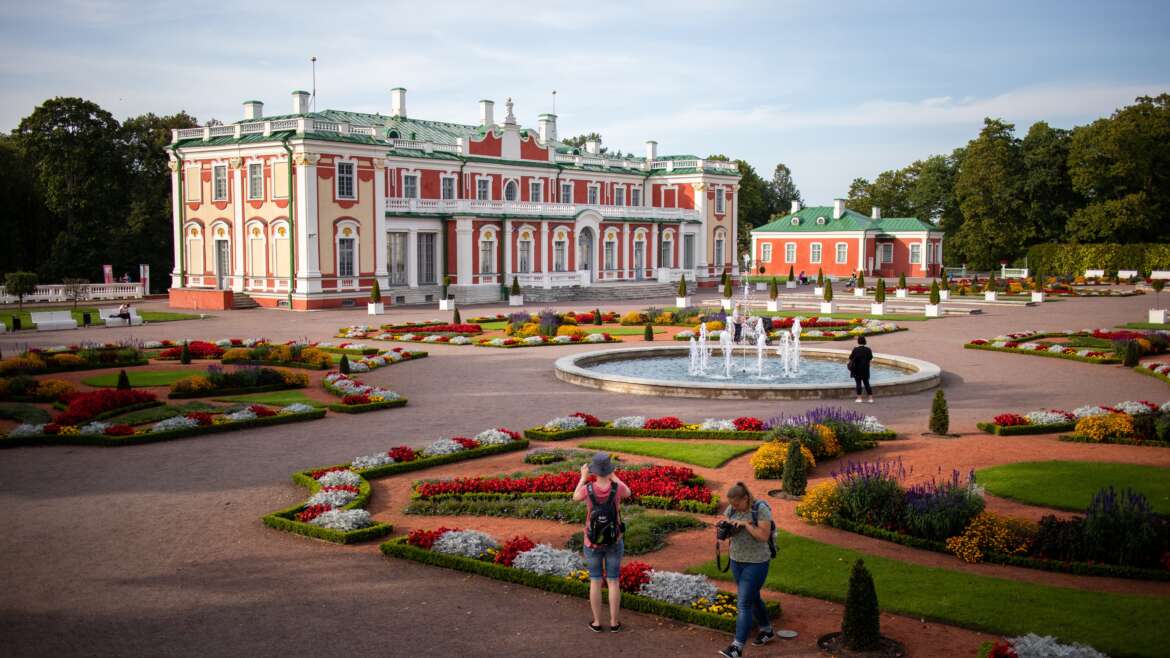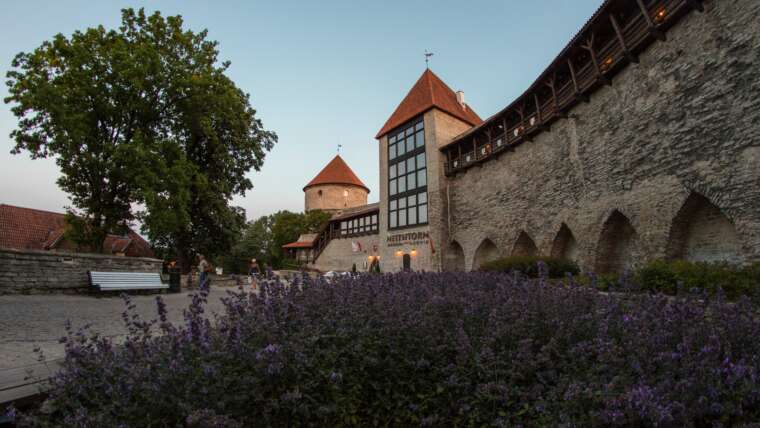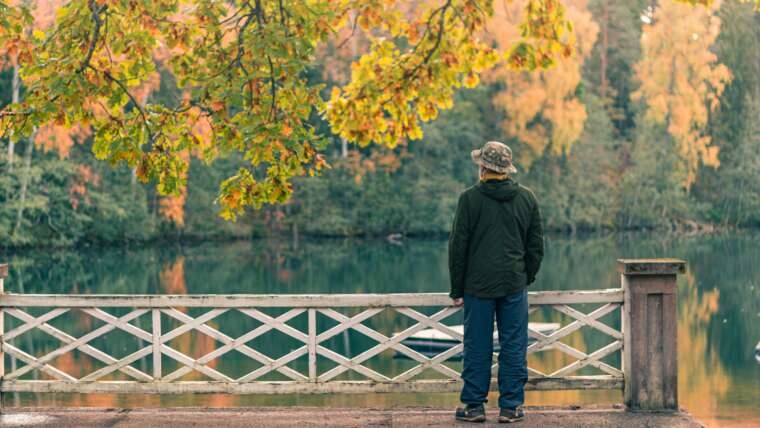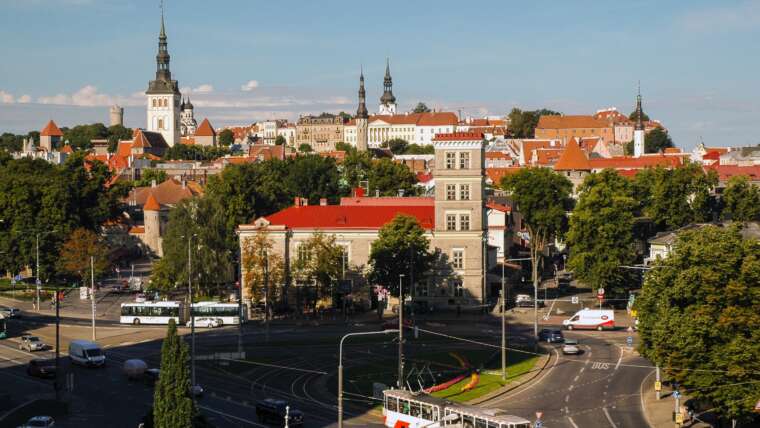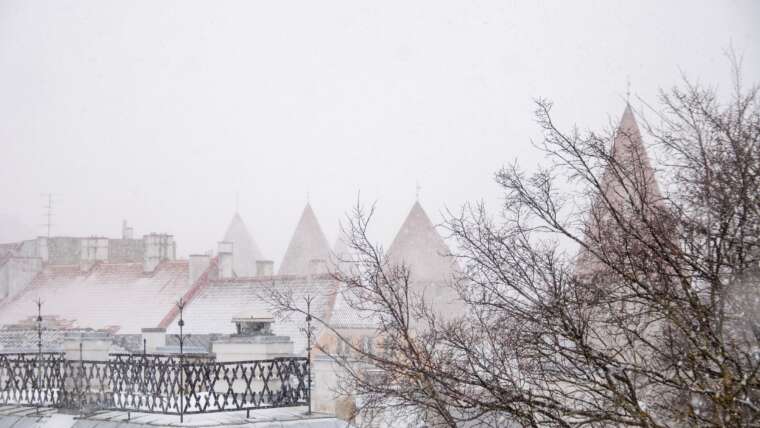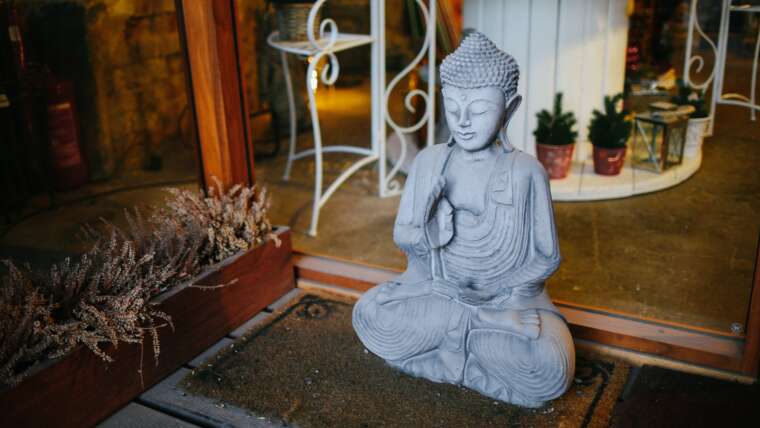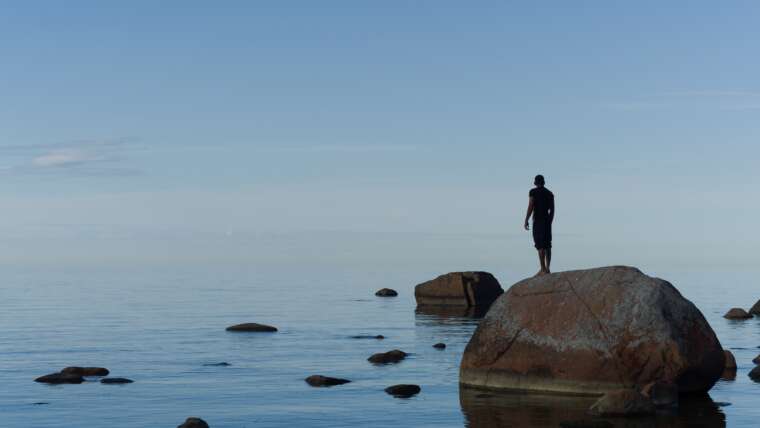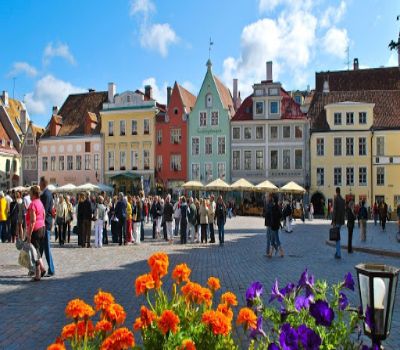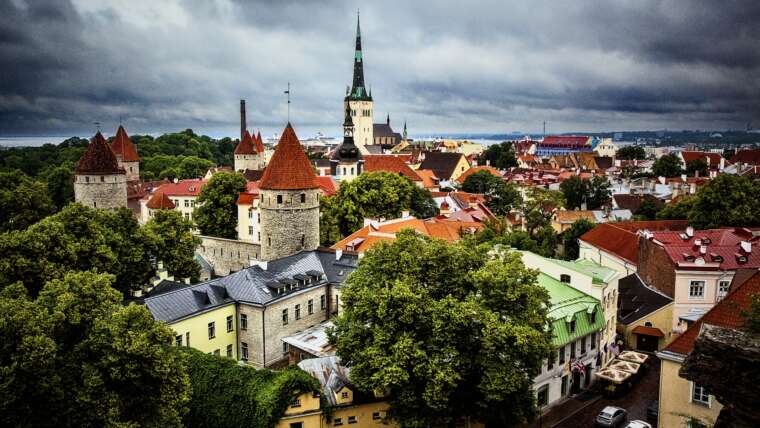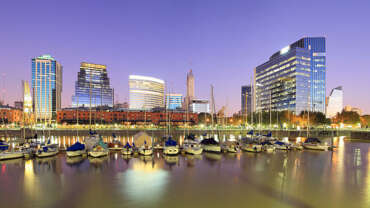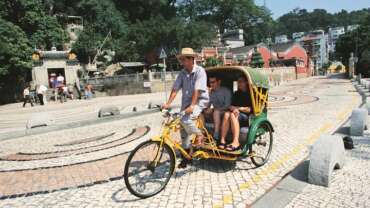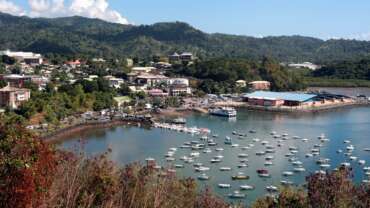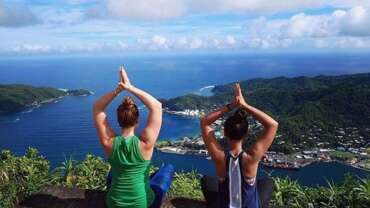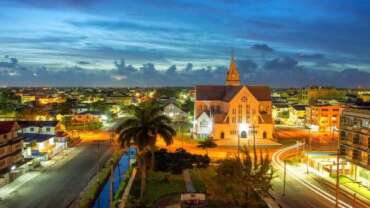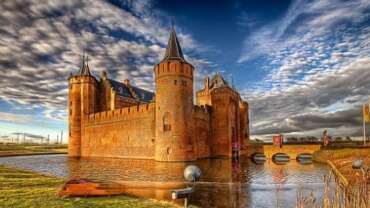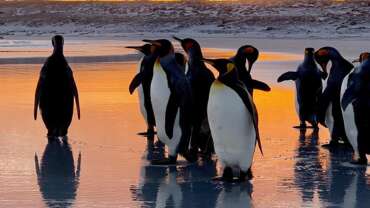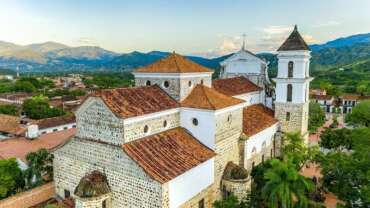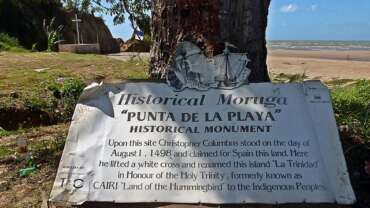Welcome to Estonia
Estonia, a country in Northern Europe, borders the Baltic Sea and Gulf of Finland. Including more than 1,500 islands, its diverse terrain spans rocky beaches, old-growth forest and many lakes. Formerly part of the Soviet Union, it’s dotted with castles, churches and hilltop fortresses. The capital, Tallinn, is known for its preserved Old Town, museums and the 314m-high Tallinn TV Tower, which has an observation deck.
At 45,227 square kilometres, Estonia is just a little bigger than Denmark, Switzerland, or the Netherlands. Culturally, it is located at the crossroads of Northern, Western and Eastern. Travelling via the country’s developed road network and timely train and bus connections, you can cross Estonia in just a few hours, and almost every village has cosy farm stays and inns.
Estonian history and culture
Estonian history extends across a long and winding road through time, telling the tales of many nations from Vikings to the kings, queens and medieval merchants of German, Swedish, Danish and Russian descent. Estonia’s deeply rooted pagan spirit and European mindset means that the country and its people bear close ties with nature while being a proudly independent EU and NATO member state with a growing reputation for innovation.
The history begins with ancient settlers
Shortly after the end of Ice Age in Europe, the first Estonian ancestors settled along the Baltic coast in 9000 B.C. By 800 A.D. traditional Estonian villages and village society had already formed. Many villages established in this era are still inhabited today.
The most striking example of the culture of ancient Estonians is the rhythmic verse, as well as the aural tradition of folk song where each line is repeated several times with thematic variations. These days you can explore the remains of this culture on the island of Kihnu and the Setu border region in southwestern Estonia. Estonians have one of the biggest collections of folk songs in the world, with written records of about 133,000 folk songs.
Nature spirituality is equally and deeply embedded in the cultural history of Estonian people, in which the trees and earth are cherished objects that possess power. Forest has always been the source of life in this region and it was believed to be a sacred place in Estonia’s primeval religion, with the ancestors of modern Estonians worshipping wood spirits.
Estonian Vikings
800-1200 A.D. was a period of raids and counter-raids by Vikings around the Baltic Sea, including by Estonian Vikings. By this time, the inhabitants of Estonia’s largest island of Saaremaa, known at the time as Oeselians, had formed considerable naval force. The most famous event of the time was when when Estonians kidnapped the Norwegian Queen Astrid and her son and future King, Olaf Trygvesson. At the beginning of 12th century they sacked and destroyed Sigtuna, then capital of Sweden. Even today, Saaremaa is rich of Viking-age treasures, mostly containing silver coins and bars.
Medieval heyday
By 13th century Estonia was confronted by, and subsequently converted to, Christianity and ruled by Teutonic Order and Danes. During this time is when the Germans became landed gentry and wielded huge influence over Estonia for the next 700 years. Territory known as Estonia and Latvia then became Medieval Livonia – a loosely tied group of small states included in the German ecclesiastical states of the Holy Roman Empire.
Tallinn, Estonia’s medieval pearl, was granted Lübeck city rights by the Danish king in 1248, under which Estonia’s capital and many other local towns were governed until the end of the 19th century. This was the time when Estonia’s main towns Tallinn, Tartu, Pärnu and Viljandi were official members of the prosperous Hanseatic League, a commercial and defensive confederation of merchant guilds and their market towns, dominating the Baltic maritime trade along Northern Europe. If today you were to take a walk in Tallinn Old Town and look up you will see what used to be salt, tea and flour warehouses equipped with attic doors and hooks once used to pull up the cargo.
Soon enough the country’s thriving medieval economy caught the attention of the neighbouring kingdoms looking to expand their geographical influence, and by the 18th century, Estonia had been governed by the king of Denmark, Sweden and the Russian tsar.
This time also saw the founding of University of Tartu by the Swedish king Gustav II Adolf, an institution that later played an important part in Estonia’s national awakening, as here is where the blue, black and white tricolour was consecrated, becoming the official flag of the independent Republic of Estonia in 1918.
Modern Estonia
The Republic of Estonia has been an independent state since 1918, shortly interrupted by the half a century long Soviet occupation following the World War II. Estonia restored its independence in 1991, known as The Singing Revolution that was inspired by the more than century-old song festival tradition.
Today’s Estonia is a thriving and forward-looking member state of EU and NATO, where you can vote online and start your own business in less than half an hour. Many have done so already, including the founders of Skype and TransferWise.
Travel around Estonia
Estonia is tiny, which is great for travellers and locals alike, and there’s a well-developed infrastructure available, so you can travel via car, bus, bike, train or plane, or even walk.
In your own car
Distances between any major towns in Estonia don’t usually exceed 3 hours of driving.
Estonia has right-hand traffic and an extensive road system. The speed limit in the countryside is 90 km/h and 50 km/h in urban areas unless specified otherwise. In the summer season, some highways allow for a maximum of 110 km/h speed. Passengers are required to wear seat belts and lights must be switched on at all times. Estonia has zero-tolerance for driving under the influence.
Estonia recognises driving licenses from countries around the world.
Foreign vehicles must have third party liability insurance in Estonia. Vehicles registered in an EEA country can only be insured in that specific country of registration. Vehicles registered in the following countries must be covered by a Green Card as a proof of insurance: Albania, Andorra, Azerbaijan, Bosnia and Herzegovina, Israel, Iran, Macedonia, Morocco, Moldova, Montenegro, Serbia, Tunisia, Turkey, Ukraine, Belarus, and Russia.
As an alternative to the Green Card, you can purchase cross-border insurance. Those vehicles not registered in EEA or in the countries listed above, must all be covered with valid cross-border insurance upon the arrival to Estonia.
By train
You can take a tram from Tallinn airport to Balti Jaam train station. From here you can take a train to larger towns such as Tartu, Narva, and Rakvere. A ticket can be bought from the station building, also from the train in cash.
There are wifi and charge points available in most trains, and while some trains offer the option of debit/credit card payment, it is wise to carry at least €20 cast just in case. In the middle of each train, there is a section called C-part, from where you can easily enter the coach with wheelchair, bicycle or a baby stroller.
By plane
You can comfortably fly to two of the biggest islands in Estonia – Saaremaa, and Hiiumaa. The flight from Tallinn to Kuressaare lasts 45 minutes, while it takes about 30 minutes to fly to Kärdla.
By ferry
For those travelling by car, taking a ferry is the most convenient way to tour the local islands. There are regular ferries operating to most larger islands, including Saaremaa, Hiiumaa, Vormsi, Kihnu, Ruhnu and Aegna. Passenger ferries operate between Tallinn and the smaller Prangli and Naissaare islands.
There are a number of tour operators offering custom trips to smaller islands. Purchasing an e-ticket ahead of time allows you to change the travel time. All the information about ferry schedules is available via veeteed.com, tuuleliinid.ee and praamid.ee.
You can also do island hopping while visiting Tallinn.
With a bicycle
During the summer season, Estonia tends to be a popular cross country cycling destination. The Eurovelo route that passes through Estonia starts from the Latvian border, runs along the coast and the islands pass Tallinn and heads to the Russian border via the northern coast (Saint Petersburg is only 140 km away from the border). Additionally, there are signs for a selection of local and regional bike routes. You get a whole new experience when travelling through Estonia on a bike (as opposed to car drives), meadows and forests alternate with villages and it is perfectly common to stop at the nearest farm to ask for a glass of cold water. There are a number of tourism enterprises located all across Estonia offering bicycle tours and rentals.
If you are just looking to tour Tallinn then look for Citybike rental spots in the city centre. Tartu, on the other hand, has a fully established city bike system.
By caravan
If you’ve decided to get closer to nature, a caravan van is a great option. The best time for a caravan trip to Estonia is of course in the summer, when most of the camping sites are open.
Camping sites are especially common in Western and Northern Estonia and on the country’s biggest island, Saaremaa. Remember that your car headlights need to be kept on all day at all times. When towing your caravan, you will need to keep its backlights on.
By taxi
There are several shared driving services in Estonia. Bolt is currently the most popular taxi app, while Uber tends to be equally popular. You have the legal right to ask for a receipt when using taxi services at all times. Taxi rates vary by company. Yellow sticker in the right rear window of each vehicle will give you an overview of prices included price per kilometre.
Cool Facts about Estonia
Estonia connects the dots between Scandinavia, Central Europe and what lies to the east
Hop over!
You can fly, sail, ride or drive to Estonia from anywhere in Europe. Located in northeastern Europe, this small coastal country is a short ferry trip away from Finland and Sweden, a coach ride away from such European capitals as Warsaw and Berlin, and an overnight train from Saint Petersburg will land you at the heart of Tallinn. Tallinn airport and ferry port are both located in close vicinity to the city centre making short city breaks extremely convenient.
A popular way to visit Tallinn for the first time is to take a daytrip from Helsinki, with the ferry trip averaging up to 2 hours per leg.
Estonia’s capital Tallinn is the best-preserved medieval city in Northern Europe
Fairytale-like
Estonia’s UNESCO world heritage capital city Tallinn was granted city rights in the 13th century by the King of Denmark. Since then, the streets of Tallinn have seen many world’s powers, from the Danes and Swedes to Germans, and tsarist and Soviet Russia. Tallinn Old Town is filled with medieval houses and alleyways and is still protected by the remnants of the city wall. The wealth of architecture in Tallinn means that there are many legends and stories to explore. In addition to the city’s medieval core, new revamped areas such as Noblessner, Telliskivi, and Rotermann are popping up at lightspeed, offering even more cool architecture to explore.
Estonia speaks Estonian…as well as English, Russian, Finnish and German
No barriers…
Estonians tend to be at least bilingual, and according to recent studies, are among the best English speakers in Europe. There’s an ongoing joke that many visitors tend to think that Estonians speak elvish. This magical sounding language is iin fact Estonian, belonging to the Finno Ugric branch of European languages. While the millennials tend to speak 2 languages fluently on average, the older generation of Estonians are often fluent in Finnish and Russian in addition to English and Estonian.
Estonia is about 50% forest
Where the wild things are
Estonians love their forests, bogs and all the creatures that live there such as lynxes, brown bears, wolves, foxes, rabbits and deers. It’s right to say that Estonians come with a tree hugging trait. In the spring and autumn time, birdwatching is an extremely popular pastime attracting both humans and vertebrates from all over the world.
Estonia has a population of just 1.3 million but is larger than Denmark and Holland
Stretch out and relax
Being among the least densely populated countries in Europe, Estonia makes for a great nature and city break destination for those looking to stretch out their limbs and enjoy some peace and solitude. In the recent five years, immigration has been driving a subtle population growth year by year.
Estonia has over 2000 islands
Roots deep within
Estonia is the only Baltic country with far-stretching and deep rooted island culture. Although mostly uninhabited, Estonian islands tend to be rural, with some holding traces of local Viking and medieval culture. Estonia’s islands used to be populated by Estonian Swedes, many of whom left the region in the II WW, leaving behind a wealth of culture visible to this day.
Estonian Song Celebration dates back to 1869, attracting thousands of singers in every 5 years
The singing nation
Estonian Song and Dance Celebration is the local signature event and a reason why Estonians are often referred to as the “singing nation”. The uniqueness of this mesmerising event has even earned the song and dance celebration a place at UNESCO’s prestigious list of Intangible Cultural Heritage.
Estonia is one of the least religious countries in the world
Architectural heritage
While Estonia has a great range of historical churches, only over a quarter of the population are affiliated with a particular religion, with Lutheranism being most prevalent among Estonians in particular.
Estonia is a digital society
E-estonia
From voting to signing documents online, Estonia implements hassle free and modern approach to running one’s errands. This means less bureaucracy, while adding more transparency and efficiency in some vital sectors such as healthcare and education. Estonia is the first e-government in the world and offers e-residency to people from all over the world. Some of the recipients of Estonian e-residency include Angela Merkel and Barack Obama.
Adventure holiday in East Estonia
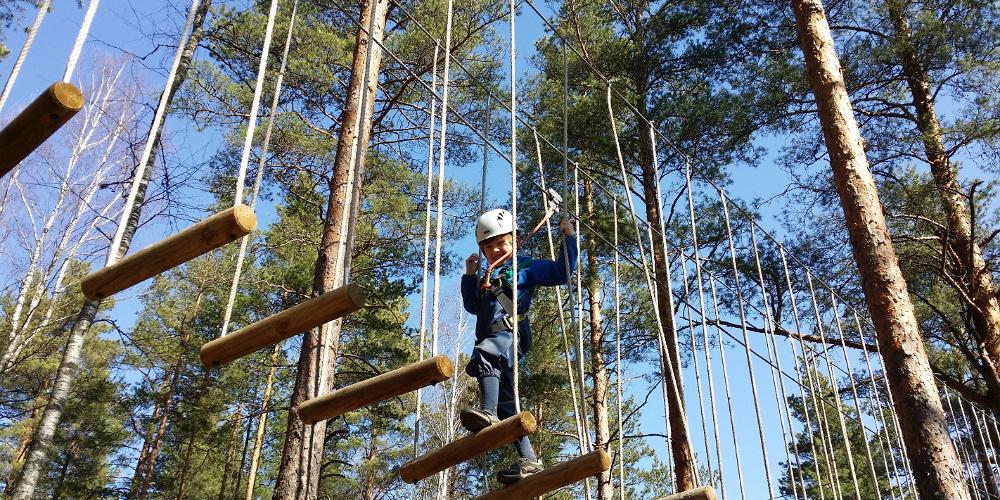
Sporting activities for thrill seekers lie in Ida-Viru, northeastern Estonia, less than two hours drive from Tallinn. The region’s rich shale oil deposits have fuelled a thriving mining industry, with some of the retired mines being repurposed with infrastructure for extreme sports. For instance, the ash hill of Kiviõli became a downhill ski slope, while the Aidu quarry became an expansive manmade lake. Depending on the season, you can either snowboard, ski, mountain bike and ride zip lines, buggies and motorboats. Grab your family and friends for days full of adventure!
Alutaguse Adventure Park
The Alutaguse Tubing and Adventure Park is located by the Kurtna lakes in Ida-Viru county. There are five adventure tracks for various levels of fitness, Children’s Adventure Park with 22 exciting obstacles, and a tubing track open throughout the year. Here, you can have the longest zip line through the air above a lake in Estonia – 400 m and another at 220 m long. Nighttime group adventures also available by reservation.
Kiviõli Adventure Centre
Kiviõli Adventure Centre is located on the slopes of the old ash hill to the north of the Kiviõli town. In the summer, race with off-roading buggies and mountain bikes or ride Estonia’s longest zip-line (700 m). In the winter, ski downhill slopes, snowboard or snow tube. On the other side of the hill is the Motocross centre, featuring Estonia’s first world championship course,1,950 m long with a height difference of 26 metres. The centre’s biggest summer event is the two-day Kiviõli Motocross Festival.
Gravity racing course at the Kiviõli Adventure Centre
Feel the speed, excitement and enjoy your first ride in a gravity racer! Gravity race cars, or soapbox cars, are engineless vehicles propelled down a slope by gravity and are equipped with a safety frame, seat, steering wheel and brakes. Race against up to seven of your friends down the Kiviõli hill to see who is the fastest!
Quarry safari in former industrial area
Go on a safari through Ida-Viru county’s former mining area. Accompanied by a trained guide and off-road vehicle driver, you can have an adventure on man-made landscapes, see mining shafts, precipices in quarries or how the groundwater presses through the surface and turns into waterfalls. This trip is full of excitement and stories; you will learn how oil shale, the brown gold of Estonia, is used.
Aidu Watersport Centre
Aidu Watersport Centre, built to the former Aidu oil shale quarry, offers tens of kilometres of canals and bodies of water. Here you can go rowing, diving, fishing, sailing, hiking, motorboat racing and tubing. Dragon boats, canoes and motorboats are available for rental.



